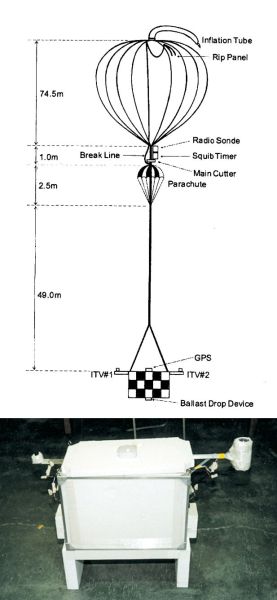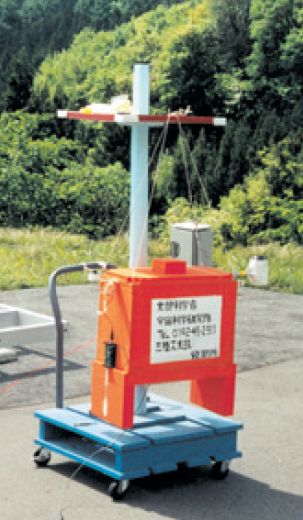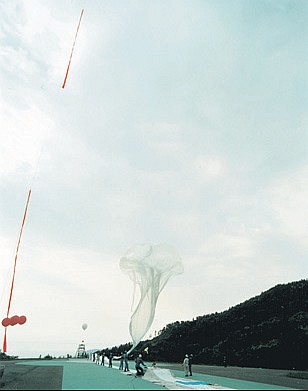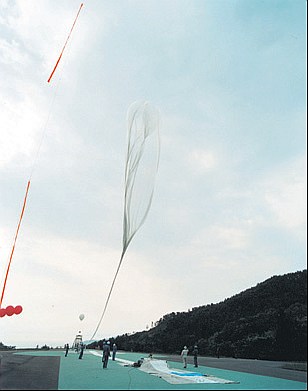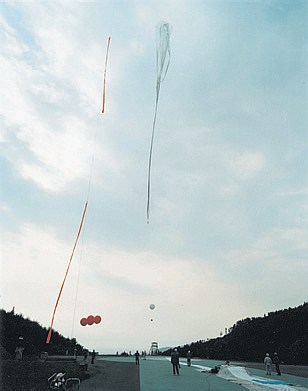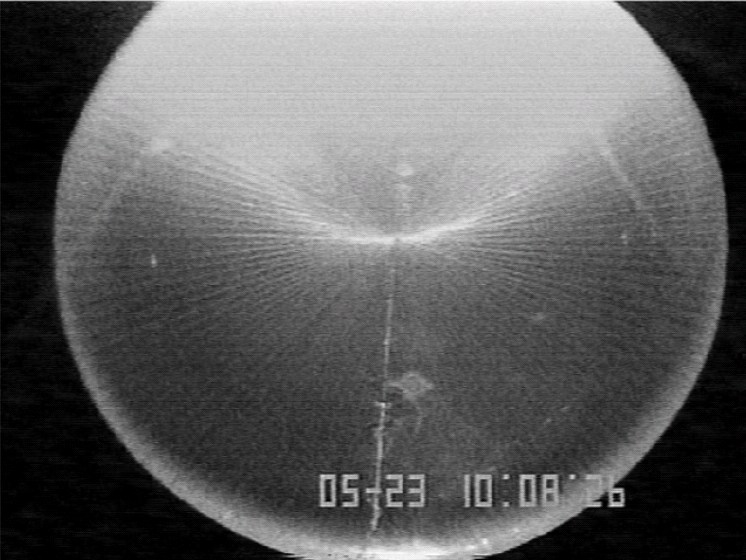Purpose of the flight and payload description
The objective of the flight was to test a balloon with a volume of 60,000 cubic meters made of ultra-thin film, as part as a program carried out by the Scientific Ballooning Group of the Institute of the Space and Astronautical Science (ISAS), Japan Aerospace Exploration Agency (JAXA) developing balloons made of very thin polyethylene film to be able to float above the stratopause with a payload less than 10 kilograms.
THE BALLOON
The balloon was manufactured using a new polyethylene film with suitable properties for balloon envelopes using metallocene as a catalyst. The effort was a cooperative development between Ube Chemical Industries Ltd. and Shibataya Kakoushi Ltd and as a result was obtained a balloon film denominated "UB" with a thickness of 3.4 µm.
The balloon volume was 60,000 cubic meters. Maximum gore width of the balloon was 1.45 meters as the width of the manufactured film was limited to 1.6 meters. Adjacent gores were heat sealed with a polyethylene tape measuring 25 mm width and with a thickness of 14 µm. All gores at the top end were taped to another film with a thickness of 20 µm. They were banded on a plastic ring made of high-strength polyvinyl chloride. An inflation tube was attached inside of the apex fitting of the balloon.
The balloon has no venting ducts and has a rip panel connected to the break line for balloon destruct at termination. For the bottom fitting, all gores are gathered and banded with adnesive tapes, which was shaped like a thin cylinder, and was folded back to make a loop to serve as hook for attaching the payload directly.
THE PAYLOAD
In the figure at left above we can see an scheme of the flight train. To monitor the behavior of inflation and expansion of the balloon, two CCD cameras, a wide view camera with fixed focus and a camera with a zoom lens, were mounted on the gondola. A GPS system on the gondola measured the flight altitude. A ballast drop device was mounted at the bottom of the gondola which allowed to drop the ballast with a speed of 0.46 kg/min.
To bring the full-inflated balloon into view, the gondola was suspended 52.5 meters below from the bottom of the balloon. The total mass of the balloon and payload was only 40 kg, however as the total length between the apex of the balloon and the gondola became 127 meters, a new the launching method was introduced for safety reasons due to the small total buoyancy.
The launch system consisted of an air bag holding system like a collar, which was mounted on a remote-controlled carriage to keep the very thin balloon envelope from any damage over the launcher line during the inflation. The balloon base was connected to the top of a parachute. The rigging rope located a few meters above the gondola was held at the release mechanism on the top of the semi-dynamic launcher used in the Sanriku Balloon Center. The payload floated under a rubber balloon above the launcher which could be rotated to make the gondola always be located facing the seaside during the initial phase of ascent. The rubber balloon was to be released from the rigging by a separation command just after the gondola started to ascend. This method allowed a safe balloon launching in case of a lightweight with a long flight train system under unfavorable wind conditions.
Details of the balloon flight
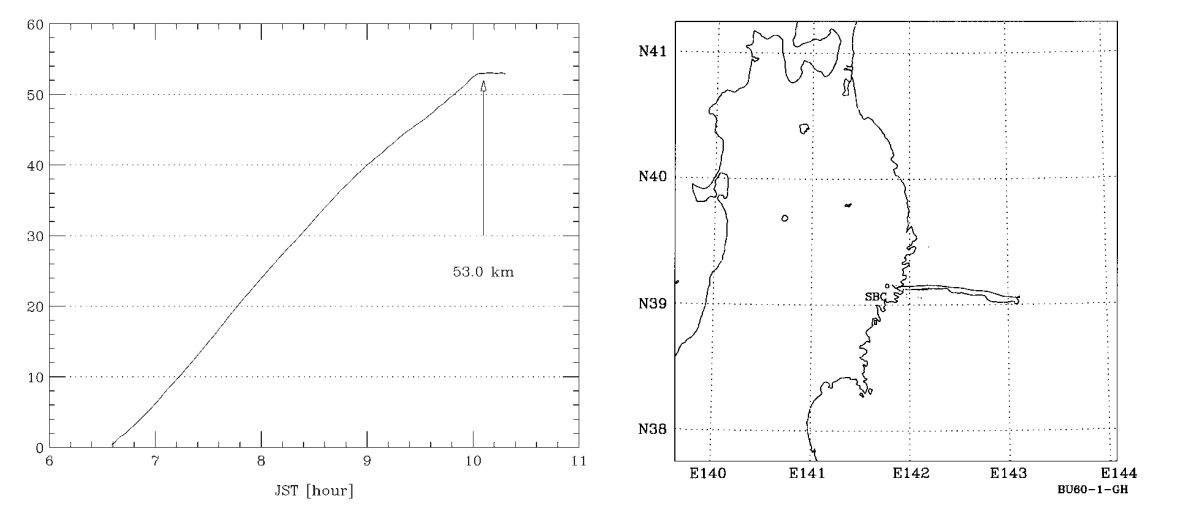
Balloon launched on: 5/23/2002 at 6:35 jst
Launch site: Sanriku Balloon Center, Iwate, Japan
Balloon launched by: Institute of Space and Astronautical Science (ISAS)
Balloon manufacturer/size/composition: Zero Pressure Balloon model BU60 (ultra thin) 60.000 m3
Flight identification number: BU60-1
End of flight (L for landing time, W for last contact, otherwise termination time): 5/23/2002 at 10:08 jst
Balloon flight duration (F: time at float only, otherwise total flight time in d:days / h:hours or m:minutes - ): 4 h 23 m
Payload weight: 4 kg
Overall weight: 40 kg
The balloon was launched from the Sanriku Balloon Center using the auxiliary balloon method at 6:35 Japan Standard Time on May 23, 2002. The balloon ascended with a mean speed of 260 m/min reached the ceiling altitude of 53 km after 3 hours and 20 minutes of flight. The balloon made a stable flight at this altitude without bursting and 20 minutes later a flight termination command was sent to cut the gondola down from the balloon activating the balloon destruct device.
This floating altitude, 53 km, became a new world record that surpassed the original one of 51.8 km established on October 27, 1972 by a balloon with a volume of 1.350.000 m3 launched by the United States from Chico, California.
External references
- Scientific observations with balloons Institute of Space and Astronautical Science Annual Handbook 2002 (In Japanese)
- Sounding rockets and ballooning activities of Japan in 2001 and 2002 16th ESA Symposium on European Rocket and Balloon Programmes and Related Research
- Ultra-Thin-Film Balloon reached the highest altitude JAXA press release
1888If you consider this website interesting or useful, you can help me to keep it up and running with a small donation to cover the operational costs. Just the equivalent of the price of a cup of coffee helps a lot.

